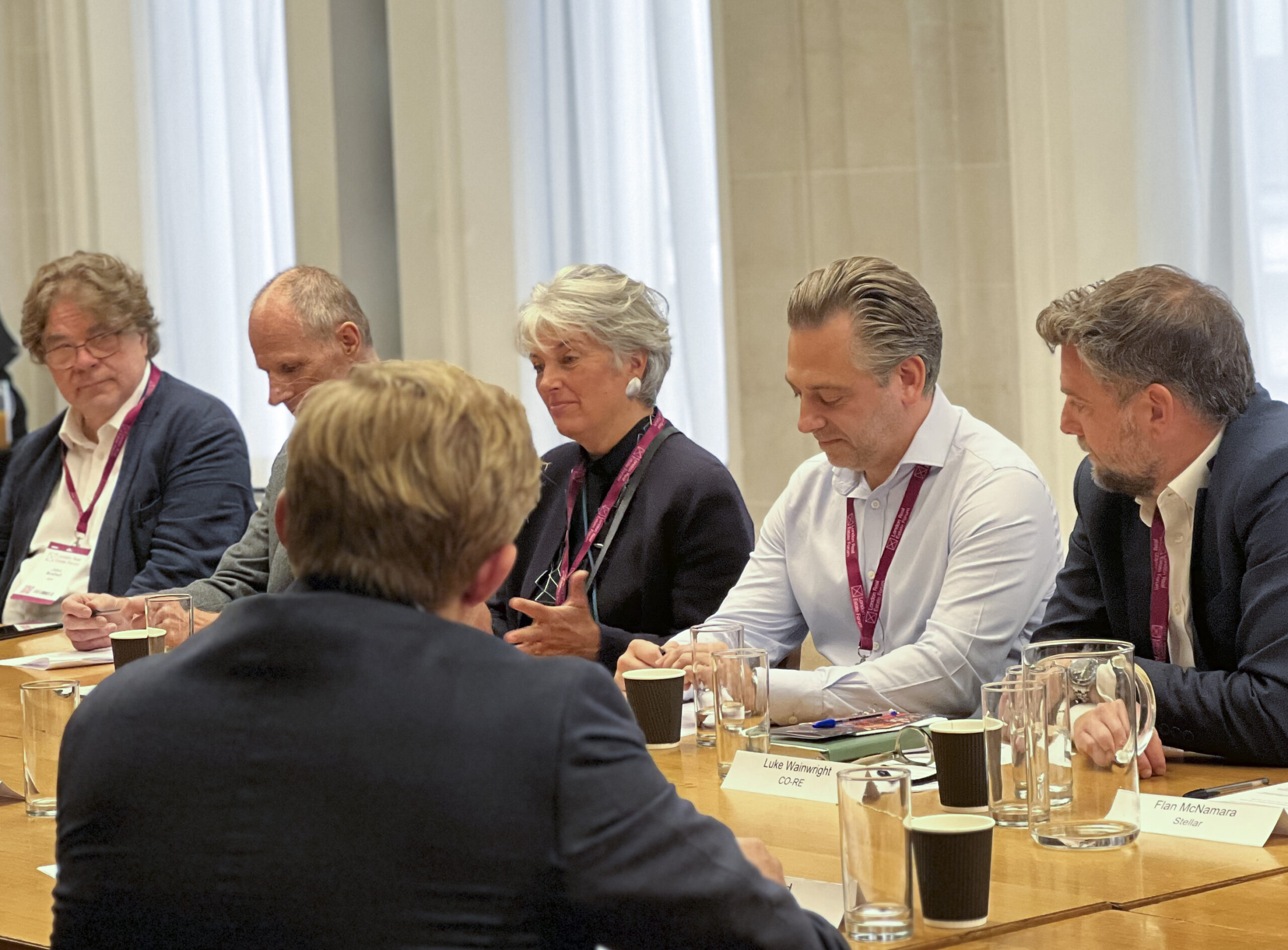Staticus is introducing a new approach to negotiation, one based on cooperation and mutual benefit. And we are actively encouraging our partners, whether they are clients or suppliers, to engage with us and embrace this new way of negotiating. An essential part of this process is communication. So, in this article, we explain why we have adopted this new approach to negotiation, how it works, and what value it brings for us, our partners, and the industry as a whole. Our COO, Ignas Stasiukonis also shares his reflections on the process so far, including working with world-renowned negotiation expert Keld Jensen to formulate this strategy.
Why we are adopting a new approach to negotiation
There are multiple reasons why we have put in place a new way of negotiating. But fundamentally, this decision is related to our core value of being committed to the long term. According to our COO Ignas Stasiukonis, there has never been a more important time to hold true to this value.
“These are turbulent times in the real estate and construction sectors across Europe,” he explains. “So it is especially important that we remain committed to the long term with our suppliers and partners. It is critical for us to build viable long-term relationships, not just think about one contract at a time. For us, this is a logical approach because we need strong suppliers for the bumpy period that is ahead.”
Our new approach to negotiation is one of the most important ways that we will build these viable long-term relationships. Construction is a low-margin, high-risk industry. Faced with this reality, companies in our sector are often tempted to compete rather than cooperate. While this approach is understandable, it results in a net loss for the industry as a whole. Solutions that would be profitable for all parties are missed or ignored because of a ‘zero-sum’ mentality when negotiating.
This competitive approach does not fit with our goal of building lasting relationships, or our culture in general. As our CEO, Ausra Vankeviciute, commented in a recent conversation with negotiation expert Keld Jensen, “We want to be different. We want to work together instead of against each other.”
Naturally, increasing our profitability is an important goal for our company. But we aim to do so in a way that aligns with our values and culture. “We could try to earn more by fighting more, by being more brutal,” says Ausra. “But that’s not us. We have committed to cooperation, to working together towards better results. That includes increasing profitability for us and our counter-parties by being open, transparent and collaborative.”
Alongside profitability, there is also the success of each project to consider, argues Ignas. “More effective and collaborative negotiation is a tool for building successful projects for all participants,” he says. “It makes it easier to deliver on time, on budget and to the necessary quality and performance standards. That is because by being collaborative in the initial negotiations, we can build some fat for unexpected risks and ensure every party is in a position to deliver.”
Putting our sustainability commitments into practice
The specific trigger that led us to review our negotiation practices was the publishing of Staticus’ Corporate Sustainability Strategy last year. In this strategy, we defined 5 key focus areas for our sustainability activities, and one of these was Partnerships.
“During this process, we dug into what partnership really means,” explains Ausra. “These days, a lot of companies use buzzwords like sustainability and partnership, but they keep approaching negotiation in the same way – targeting the lowest price and only thinking about their own interests. This does not reflect who we are and the way we want to work. So we looked at ways we could invite our clients, our suppliers, and other stakeholders into this process and benefit from working together mutually towards the same goal.”
World-leading negotiation expertise
To achieve our goals of building strong, sustainable partnerships and maximising profit for all, we reached out to Keld Jensen. Keld is an Associate Professor at BMI Institute and Aalborg University, the author of 21 books on negotiation, and the creator of the SMARTnership model, the world’s most awarded negotiation strategy.
The key element of the SMARTnership model is that it is collaborative, where success on one side of the table doesn’t require the counterparty to pay for it. This is achieved by creating additional value (or asymmetric value as Keld puts it) through cooperative deal-making.

Keld worked closely with our management team on formulating Staticus’ new negotiation strategy.
A professional approach and a thorough process
“We wanted to realise this process in a very thorough and professional way, to make sure it was more than just talk,” says Ignas. “We found a world renowned expert, ran a series of workshops, and talked directly with our clients and suppliers. We have invested a lot of our time and money into this process, building resources and training our team.”
The process kicked off with some internal planning sessions. The main focus here was to select team members – our negotiation champions – who would be deeply involved in this process.
We then had 3 days of planning sessions with this team. “The toughest task at this stage was to create the list of potential variables that might be part of our negotiations with suppliers and clients,” explains Ignas. “In the end, we identified 150 possible variables. On the one hand, this was very encouraging as we saw how much space we have and how much value we can unlock by approaching negotiation in a new way. But on the other hand, we now had the challenge of getting from 150 variables down to a workable list of the 20 or 30 most important. Making this shortlist was very challenging, but we did it.”
Involving our partners
With our short list of variables completed, the next step was to involve our clients and suppliers. “We selected 2 clients and 1 supplier for this process,” says Ignas. “With each, we held a live meeting, with Keld acting as a moderator. We talked them through the process we had undertaken, and shared the variables we had identified. The key goal here was to answer the question – ‘Are the things that are important to us, also important to you?’ Of course, it was very interesting to know what variables they wanted to add to the list as well.”
The challenge of trusting
“It was encouraging to learn through these sessions that the majority of variables that matter for us are also important for our partners,” Ignas continues. “And this means they are open to discussing them. We also discovered just how difficult it is to bring trust to the table. It was challenging for us and our partners, even when everyone wanted to be open. The zero-sum approach to negotiation is something we are all so used to, so it will clearly take time to get used to a different approach. We emphasised to our partners that this is new for us too, and we are learning.”
“What really encouraged me is that with one partner in particular, they clearly ‘got it.’ We felt the mutual trust between us, and the representative who met with us returned to their company and was very enthusiastic about this approach. They have started their own internal discussion. And one of our sales team told me that people from this company keep asking questions about this new approach to negotiation, and that they are very interested to learn more. So that is a very positive sign for us.”
Going forward with our new negotiation strategy
After the sessions with our partners, we revisited our list of variables to see if anything needed adjusting. “We saw that a few small adjustments were needed, but nothing major,” says Ignas. “The next steps was to produce our own internal materials defining our new approach. Then Keld ran workshops for our negotiation champions, the key members of our team who will be using this new approach with clients. Our champions will also be leading the process and training others around them.”
“Now we are fully prepared and ready to talk with our partners. We want to invite our partners to join us in approaching negotiations in a different, and more collaborative, manner.”
“We understand that this is a challenge, and we ourselves are also learning how to do this. For us, the motivation to engage in negotiation in this new way is this: there are huge benefits to be had. We can build stronger long-term partnerships that will enable us to navigate the turbulent times we are in. We can deliver more on sustainability. And we can enhance the profitability and business resilience of every party.”
“So I want to invite all of our partners who are interested in this approach to negotiation to talk to our people,” concludes Ignas. “They have received in-depth training from an international expert. We are happy to provide training to our partners and can also explore and experiment with these strategies and methods together.”
As our CEO Ausra says in her interview: “Let’s be open, let’s try new things and be transparent. Let’s look for hidden value instead of focusing on the last 10 cents and missing the opportunities that are far bigger and more exciting.”













